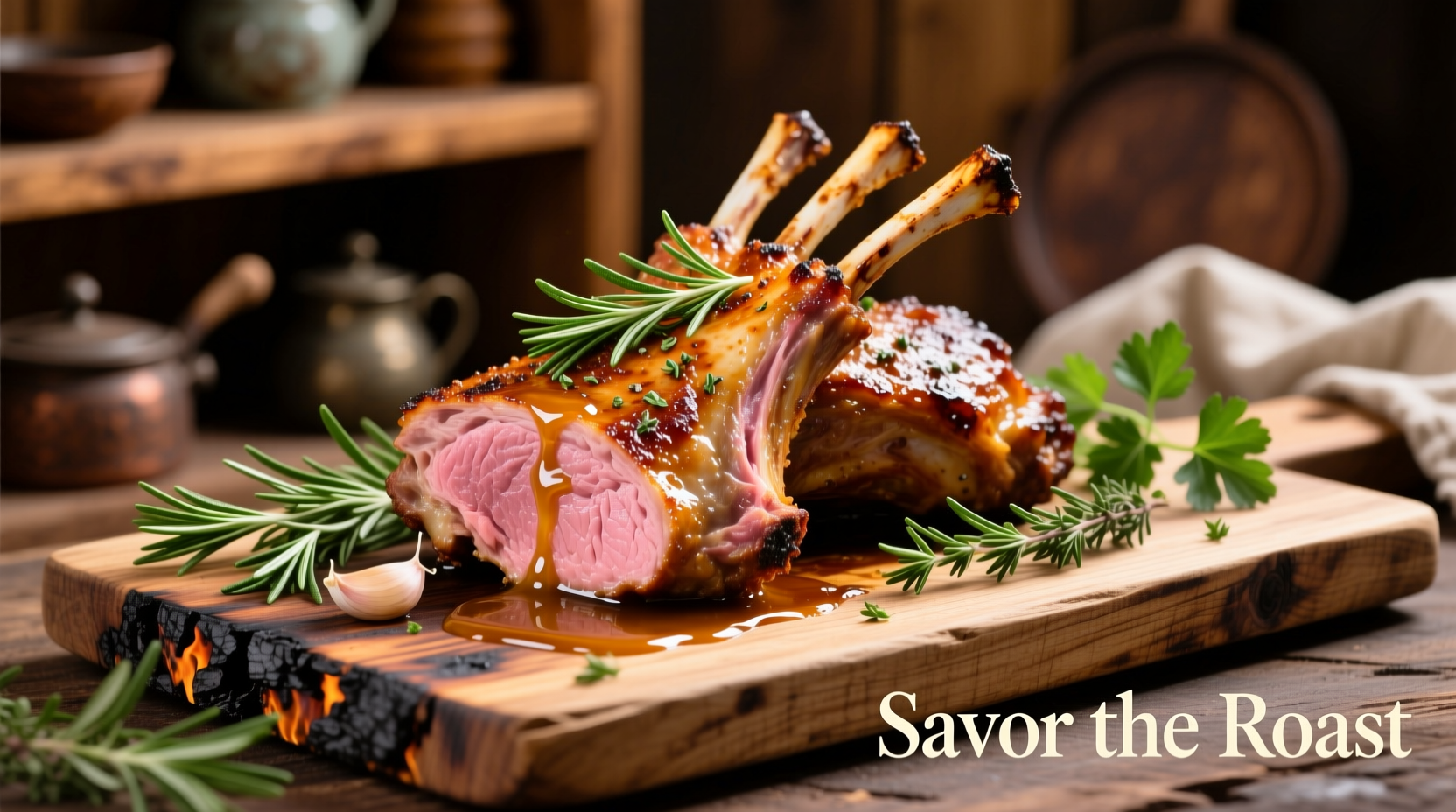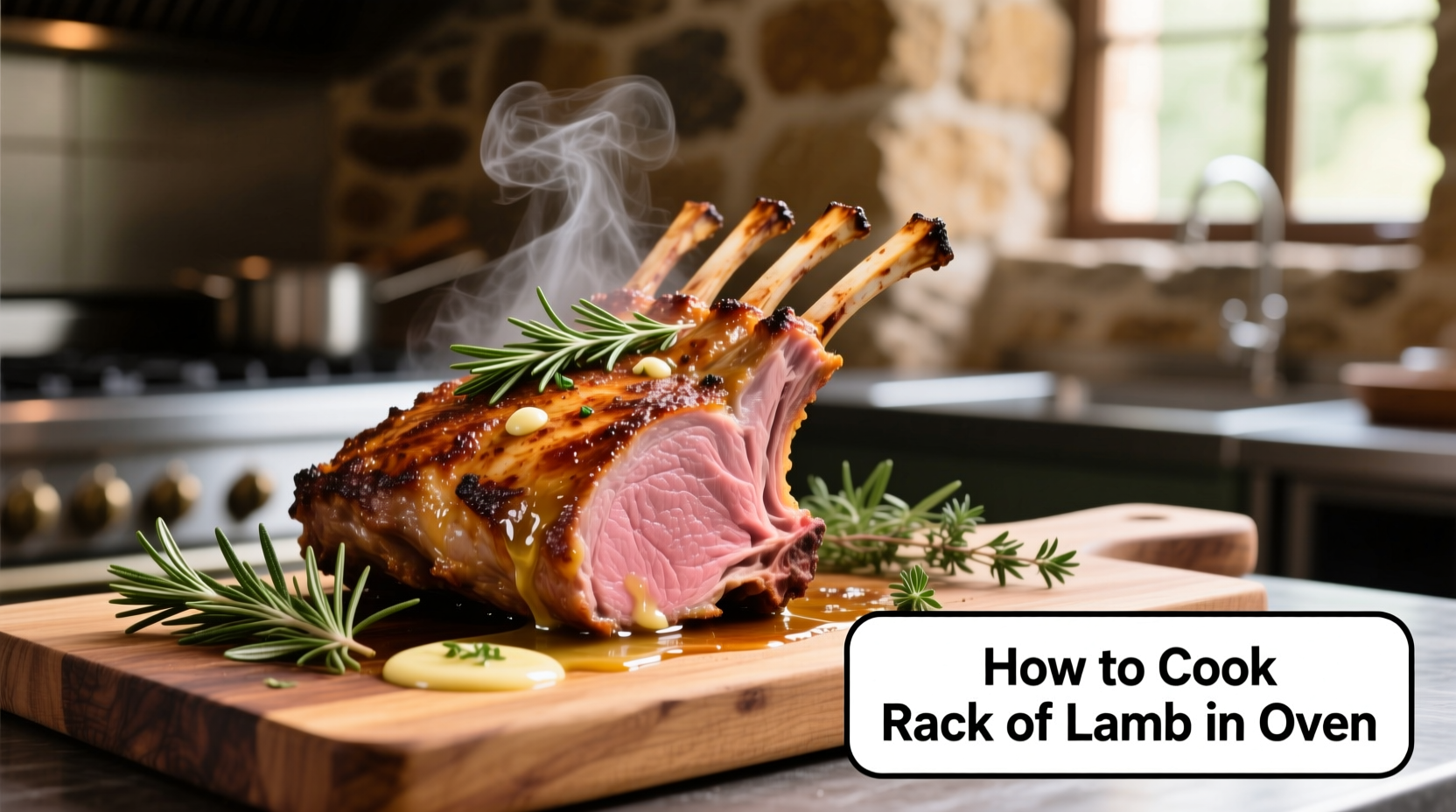Perfectly cook rack of lamb in oven by preheating to 375°F (190°C), seasoning generously, roasting for 15-25 minutes until internal temperature reaches 125°F (rare), 135°F (medium-rare), or 145°F (medium), then resting 10-15 minutes before serving. This method yields tender, flavorful lamb with crispy exterior and juicy interior every time.
There's nothing quite as impressive as a perfectly cooked rack of lamb emerging from your oven—golden-brown, aromatic, and ready to elevate any dinner into a special occasion. As a French-trained chef who's prepared this classic cut hundreds of times in professional kitchens across Europe, I can tell you that mastering oven-roasted rack of lamb is simpler than you might think. The key lies in understanding the cut, precise temperature control, and respecting the essential resting period.
Why Rack of Lamb Deserves Your Attention
Rack of lamb represents one of the most premium and flavorful cuts available, prized for its perfect balance of lean meat and delicate marbling. This "royal cut" has graced banquet tables since medieval times, when French nobility considered it the finest presentation of lamb. Today, it remains a favorite among professional chefs for its elegant presentation and rich, distinctive flavor that's neither overly gamey nor bland.
Preparation: Setting the Stage for Success
Proper preparation makes the difference between good and exceptional rack of lamb. Follow these steps to ensure optimal results:
Selecting Your Rack
Choose a rack with bright pink meat, firm texture, and creamy white fat. Look for "Frenched" bones (cleaned of meat and fat at the tips) for elegant presentation. A standard rack weighs 1-1.5 pounds and serves 2 people. The American Lamb Board recommends selecting lamb with the USDA Prime or Choice grade for best results.
Essential Trimming
While most racks come pre-trimmed, check for excess fat or silverskin:
- Remove thick fat deposits on the meat side (leave thin layer for flavor)
- Wipe bones clean with damp paper towel
- Pat entire rack dry with paper towels—critical for proper searing
Seasoning Strategy
Simple seasoning allows the lamb's natural flavor to shine. For classic preparation:
- Rub with 1 tablespoon olive oil
- Season generously with kosher salt (1 tsp per pound)
- Add freshly ground black pepper
- Optional: minced garlic, fresh rosemary, or thyme

Oven Roasting: The Critical Cooking Phase
Temperature control and timing determine your success. Follow this professional approach:
Oven Setup
Preheat your oven to 375°F (190°C) with rack positioned in the center. Place a wire rack inside a roasting pan to elevate the lamb, allowing heat circulation. For professional results, use an oven thermometer to verify actual temperature—many ovens run hot or cold.
Cooking Timeline
Roast time varies based on desired doneness and rack size. Use this guideline from the USDA Food Safety and Inspection Service:
| Doneness Level | Internal Temperature | Approx. Cooking Time* | Visual Cue |
|---|---|---|---|
| Rare | 120-125°F (49-52°C) | 12-15 minutes | Very soft to touch |
| Medium-rare | 130-135°F (54-57°C) | 15-18 minutes | Soft with slight resistance |
| Medium | 140-145°F (60-63°C) | 18-22 minutes | Firm with springy texture |
| Medium-well | 150-155°F (66-68°C) | 22-25 minutes | Firm with little give |
*For 1.25 lb rack; add 2-3 minutes per additional 0.25 lb
Temperature Monitoring
Invest in an instant-read thermometer for accuracy. Insert into the thickest part of the meat, avoiding bone. Remember that temperature will rise 5-10°F during resting (carryover cooking). Remove lamb from oven when 5°F below target temperature.
The Non-Negotiable Resting Period
This critical step often gets overlooked but makes or breaks your results. After removing from oven:
- Transfer rack to cutting board, bone-side down
- Tent loosely with foil
- Rest for 10-15 minutes
Resting allows juices to redistribute throughout the meat. Cutting too soon releases precious juices onto your cutting board rather than staying in the meat. During this time, the internal temperature will continue rising to your perfect doneness point.
Serving Like a Professional
For elegant presentation:
- Cut between bones with sharp chef's knife
- Serve 2-3 chops per person
- Pair with mint sauce, red wine reduction, or herb crust
- Accompany with roasted vegetables or creamy mashed potatoes
Troubleshooting Common Issues
Even experienced cooks encounter challenges. Here's how to handle them:
Problem: Uneven Cooking
Solution: Position the curved side of the rack facing up during roasting. For extremely curved racks, tie with kitchen twine to maintain even shape.
Problem: Overcooked or Dry Meat
Solution: Always use a thermometer and remove at 5°F below target temperature. Never skip the resting period. Consider brining for 2-4 hours before cooking for added moisture retention.
Problem: Bones Scorching
Solution: Wrap exposed bone tips with small pieces of aluminum foil during the final third of cooking time.
Flavor Variations Worth Trying
Once you've mastered the basic technique, experiment with these professional variations:
Herb Crust
Mix 2 tbsp Dijon mustard, 1/4 cup breadcrumbs, 2 tbsp minced herbs (rosemary, thyme, parsley), and 1 minced garlic clove. Spread over rack before roasting.
Mediterranean Style
Rub with olive oil, lemon zest, and oregano. Serve with tzatziki sauce and roasted lemon wedges.
Spice-Rubbed
Combine 1 tbsp paprika, 1 tsp cumin, 1/2 tsp coriander, 1/2 tsp cinnamon, and 1/4 tsp cayenne. Rub onto seasoned rack before roasting.
Food Safety Essentials
According to the USDA Food Safety guidelines, lamb is safe to eat at 145°F (medium) with 3-minute rest time. However, many chefs and food safety experts agree that lamb can be safely enjoyed at lower temperatures (125-135°F) when properly handled. Always follow proper food handling practices: keep raw lamb separate from other foods, refrigerate within 2 hours of cooking, and consume leftovers within 3-4 days.
Why This Method Works Every Time
The French culinary tradition perfected this preparation method over centuries. Unlike high-heat searing methods that risk overcooking, the moderate oven temperature (375°F) allows for even cooking while developing a beautiful crust. The resting period—often neglected in home cooking—ensures maximum juiciness. This approach respects the delicate nature of lamb while delivering restaurant-quality results in your home kitchen.











 浙公网安备
33010002000092号
浙公网安备
33010002000092号 浙B2-20120091-4
浙B2-20120091-4